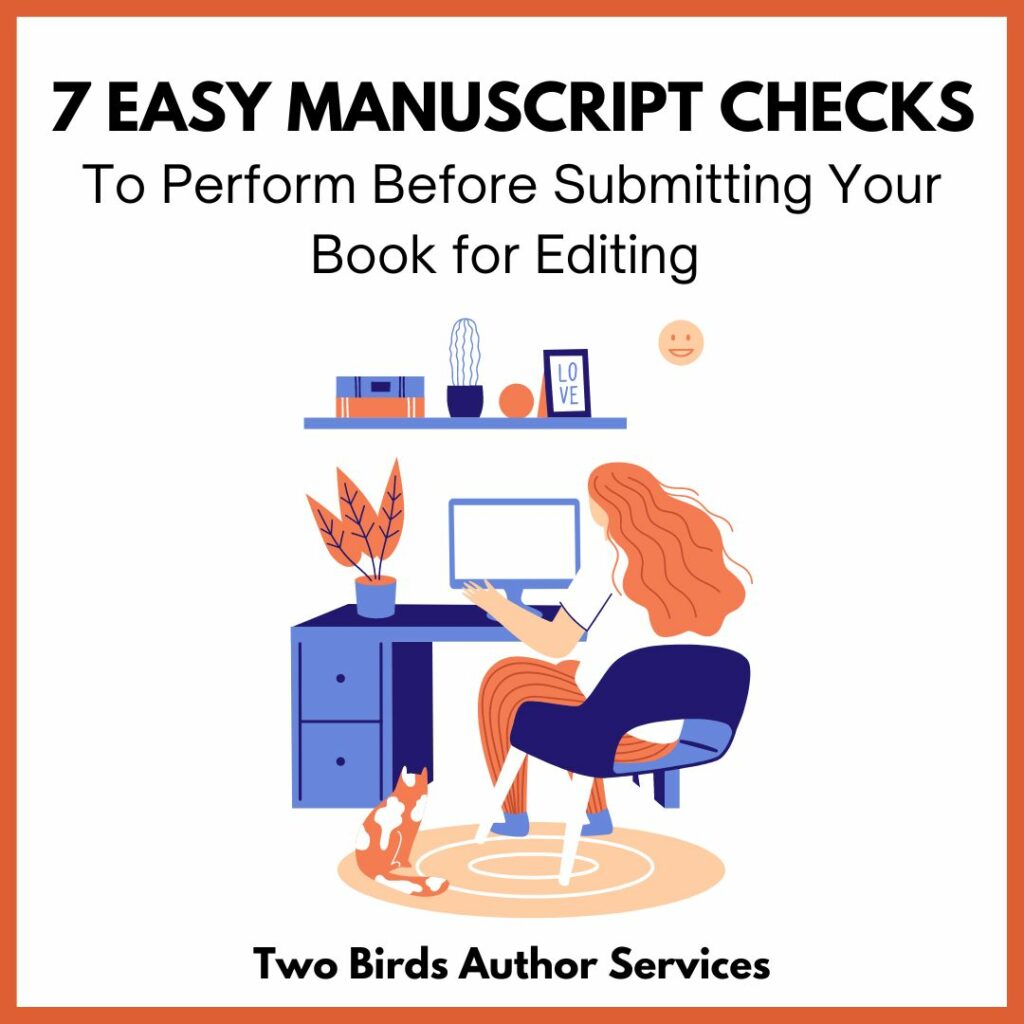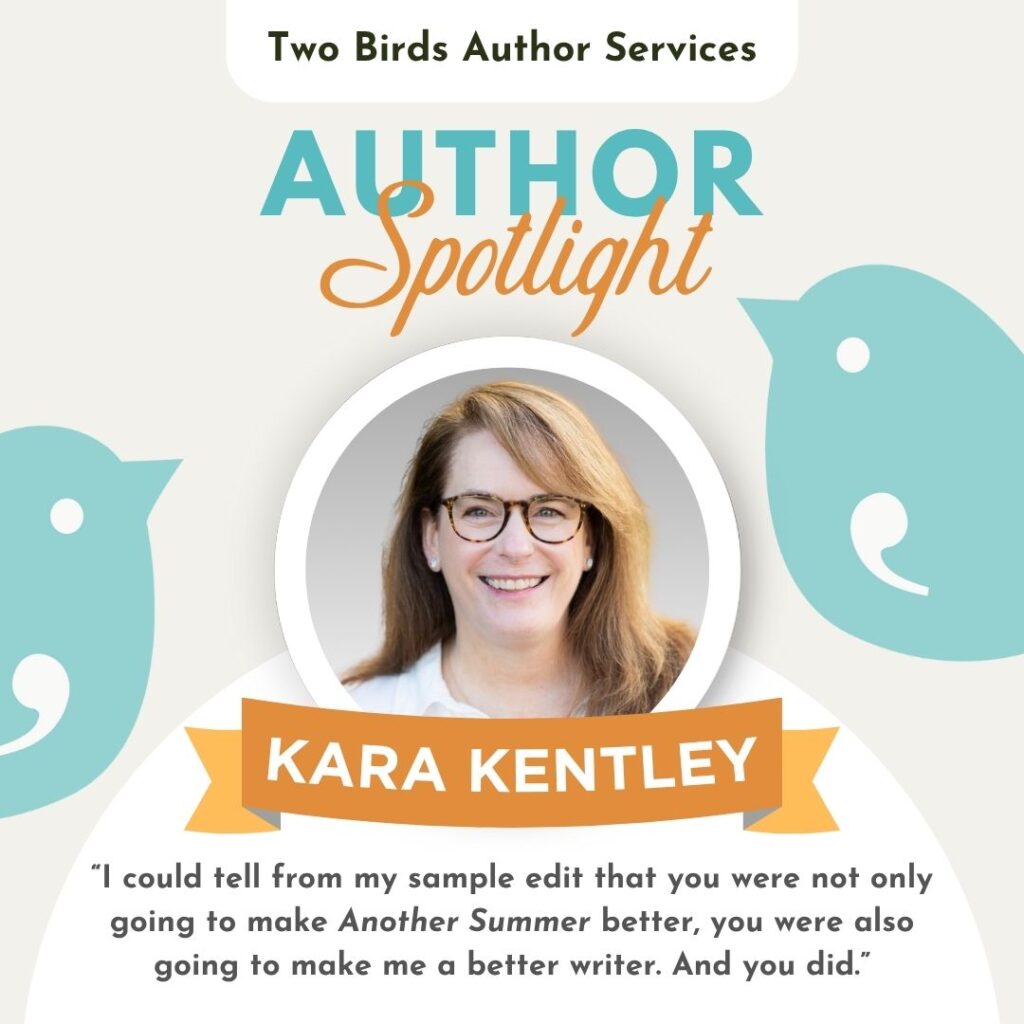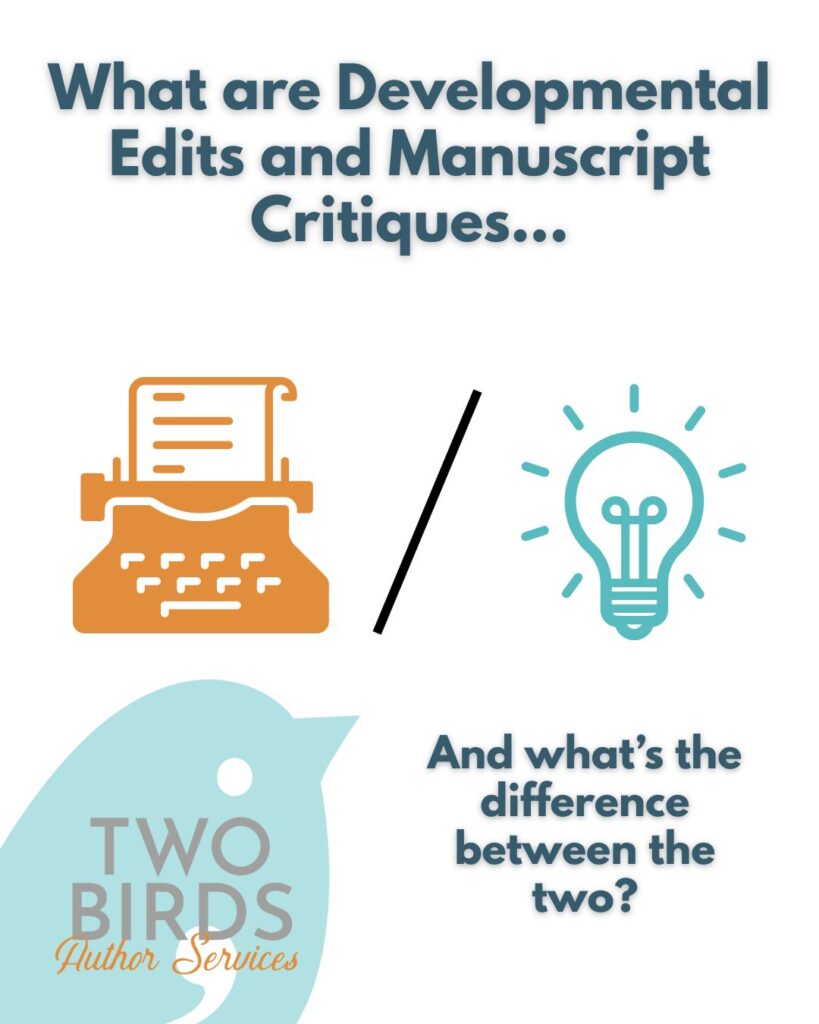Do these things before submitting your book for editing, and help create a better book. Do these things before asking for a sample edit, and you might just save yourself some money…
Here at Two Birds Author Services, we’ve come up with a few suggestions on a few quick things you can do before submitting your manuscript for editing. We know that by the time you send your book to us, you might not want to look at it anymore, or at least are looking forward to taking a break from fiddling with it! But maybe one … more … pass … keeping a few of the following things in mind can ensure an even smoother editing process. Which of course results in an even more awesome book!
PRO TIP: It’s also worth mentioning another quick tip up front. If you do these seven things before requesting a sample edit for a new project, it just might save you money. The more polished your manuscript is before submitting it to us, the more we can take that into consideration when pricing your project.
1. Check for hot words
Hot words are single words or whole phrases that get repeated too often. For a more in-depth discussion on them, check out our earlier blog post on them, and pick up our free list of commonly overused phrases.
In addition to the common set of words most people tend to use too much, you might also have your own unique set of hot words. Read a random page or two of your manuscript and see if you can identify any—you might be surprised by what you find! Make a list of them for future reference (pro tip: give this list to your Two Birds Editor, and we’ll make sure they get added to your personal style sheet!)
Now run a check in your manuscript for the words on our list as well as your own, and remove as much repetition as you can. In many cases these words can simply be deleted with no impact on meaning. If you decide they can’t be deleted, try to find different ways to say the same thing. This can be hard, but your readers will thank you!
2. Strengthen your verbs
Take a look through your manuscript and see how many times these words show up:
- Was/wasn’t
- Were/weren’t
- Is/isn’t
- To be
If you see a lot of these, chances are you might be suffering from “-ing-itis.” Meaning, you’ve got some weak verbs!
Examples
- She was starting to feel annoyed
- They were running
- I was thinking
- He wasn’t going to go skiing
Using these -ing verbs is often the easiest and quickest way to get your book done, but rarely the most impactful. It can be considered weak writing to use too many -ing verbs, and if you want to strengthen your book, use as few as possible. A quick scan of your manuscript and a little time spent switching to stronger verbs can go a long way toward better writing.
3. Review punctuation and sentence structures
Do you know the difference between a dialogue tag and an action beat? If not, do a quick search online and familiarize yourself with the difference. Understanding the distinction between the two will help ensure your manuscript is punctuated properly, as well as making sure capitalization rules are followed.
Examples
- “That’s not right,” he said.
He said is a dialogue tag. This means there’s a comma after the last word of the dialogue, and the first word of the tag (he) is not capitalized.
- “That’s not right.” He scowled at me.
Here, he scowled at me is an action beat. This means there’s a period at the end of the dialogue and the first word of the action beat is capitalized.
Another handy thing you can do is make sure your manuscript is properly broken down into logical paragraphs and has correct punctuation. For example, only one of your characters should speak per paragraph.
4. Tidy up your formatting
If you write your manuscript in Scrivener, did you know you can run simple checks to get rid of double spaces between words, and ensure all of your quotation marks are “smart quotes?” I know, amazing, right?
These types of checks can save you from a manuscript full of formatting errors once you export your work to Microsoft Word, which is the industry standard for fiction editing.
Once you’ve exported to Word, or if you do all your drafting in Word, there are a few other checks you can run, such as making sure you’re not using the Tab feature to indent the first line of a new paragraph (instead, you should set up your document to automatically indent the first line of each paragraph).
Sending in a properly formatted document will not only make your editor literally jump for joy, it’ll also ensure the editing process is faster and more precise, resulting in a cleaner book overall.
5. Ensure consistent naming and spelling
Have you ever gotten halfway into a draft of a new book, and decided to make a change to someone’s name, or to a location? Of course this means you’ll need to go through what you’ve already written and change every “Bob” to “Bill,” or every “Ylingwith Mountain” to “Mount Mordwyn.” What happens if you miss one?
Hopefully your editor will catch it, but remember they don’t k now your story like you do, so at best they may get confused and at worst, they might skip over it (the operative word being might). Be sure to do a search and replace on your manuscript to catch any missed changes. Your best bet is to do a continuity readthrough, to look for incorrect names of people, places, etc.
Which leads right into our next suggestion…
6. Provide your editor with a synopsis and/or worldbuilding notes
This is especially helpful if you’ve hired an editor to perform a developmental edit or manuscript critique, but can also be appreciated for a line edit, and even a proofread. Letting your editor know, in a brief document, what your book is about will give them some help to follow along with your plot. Also, writing a quick synopsis is great practice for writing your blurb!
Additionally, if you’re writing in a fantasy or paranormal genre, it’s helpful to have your worldbuilding basics documented somewhere. It’s helpful for the editing process, but you can also add this information to your series bible, for later use.
7. Fill out a Style Sheet
Here at Two Birds, we create a custom style sheet for each client. This document includes basic grammar and stylistic conventions, and can be personalized by you, the writer! If you have stylistic preferences that aren’t considered standard (such as using alright instead of all right, we can keep note of that and edit your books accordingly. Style sheets also offer places to list important characters and locations for your story, so we can double-check spelling and consistency (looking at you, Mount Mordwyn!)
It’s also standard policy at Two Birds to return your style sheet along with your edited manuscript, because we usually include big-picture notes at the end of the document for you to review. These notes include things we felt worked well, things that we had questions about, or stylistic suggestions. Because we don’t just send you an edited book, we send you suggestions and tips so your next one is even more awesome!
If for some reason we forget to send you a style sheet to complete before your first project with us, feel free to reach out and request one.
Have questions about the editing process? We’d love to chat with you and help you figure out your next steps. Contact us to set up a free sample edit.
Sign up to receive our monthly newsletter, full of more helpful info and exclusive content.



